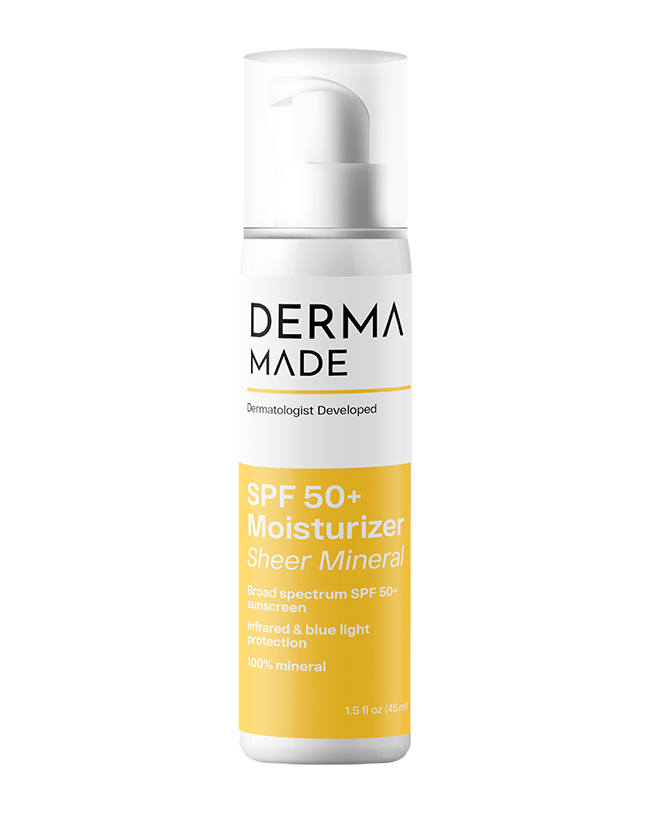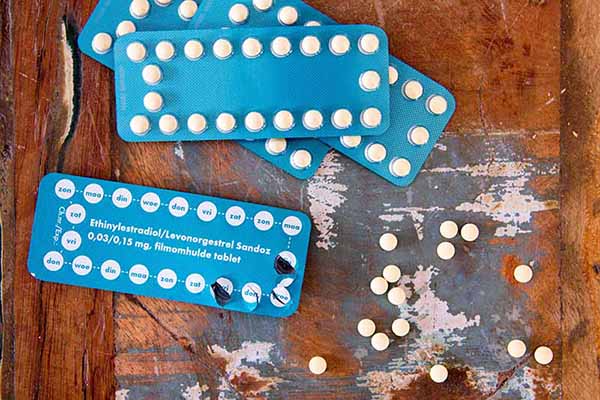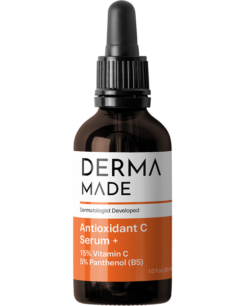Everyday you look at and care for your skin. But have you ever wondered what the outer layer of skin is and why it shows aging?
The Outer Layer of Skin or Epidermis
We slather lotions and potions on our skin every day. We deal with pimples and freckles. But what’s really going on with the outer layer of our skin? The epidermis is responsible for producing our skin tone, and it acts as our protective waterproof layer, also called the moisture barrier or acid mantle.
The epidermis is an oil-loving and water-hating layer, meaning water can’t penetrate this layer. And water based skincare ingredients or topical treatments can’t penetrate this layer either.
Your 1st Line of Defense
With around 1,000 microorganisms living around the surface of your skin, it needs protection. The epidermis acts as that barrier to protect the body against bacteria and damage from UV light and minor injuries. The very top layer of skin cells does most of the work as the barrier. This is also the home of the moisture barrier. Since the epidermis contains a lot of water, the moisture barrier works against water loss to keep skin healthy and hydrated.
The functions of the moisture barrier include stopping water loss. The moisture barrier helps to regulate skin pH by keeping it at a slightly acidic level between 4 and 6. A proper and healthy pH is important for your skin.
Why The Outer Layer of Skin Shows Aging
The outer layer of skin shows aging first due to it’s direct contact with the elements and environment including sun exposure, pollution, smoke, and makeup. Poor lifestyle habits also impact the skin’s aging process.
- Unprotected sun exposure accounts for the first signs of skin aging. Why? UV radiation from the sun does damage.
- UVB rays cause sunburns. They are responsible for the sun tan as well. UVB rays also contribute to skin cancer and some signs of aging.
- UVA rays are responsible for visible signs of aging like fine lines, wrinkles, and sagging skin. These rays directly damage the cell’s DNA resulting in not only skin aging but skin cancer.
- Pollution affects skin. It depletes skin of vitamins such as C and E which are necessary to keep skin healthy and combat oxidative stress.
- Tobacco smoke works on the skin in a similar way to pollution. A 1985 study found that smokers can be identified by facial traits. These traits include wrinkles, gauntness of the face, and a grayish or ashen complexion.
How to Protect the Outer Layer of Your Skin
- Daily cleansing. Each and everyday wash your face morning and evening. Cleansing removes the buildup of shed skin cells, makeup, and SPF, which mix with natural skin oil and clog pores. Cleansing is a must.
- Exfoliate regularly with acids. Acid exfoliators gently remove the excess dead skin cells that are shed everyday. This helps keep the outer layer of skin healthy.
- Moisturize. Daily moisturizing locks in the water that would normally evaporate through the skin on a daily basis. This helps the skin stay more plump, and it helps to keep the skin’s moisture barrier healthy and intact.
- SPF. Daily sunscreen is a must. Unprotected sun exposure takes a toll on the outer layer of skin, faster than almost anything else. Keep your skin younger looking by giving it added protection with an SPF 30 or higher.
The outer layer of skin can be cared for in such a way to slow down the first signs of aging. Take steps today to protect this organ that protects you.









